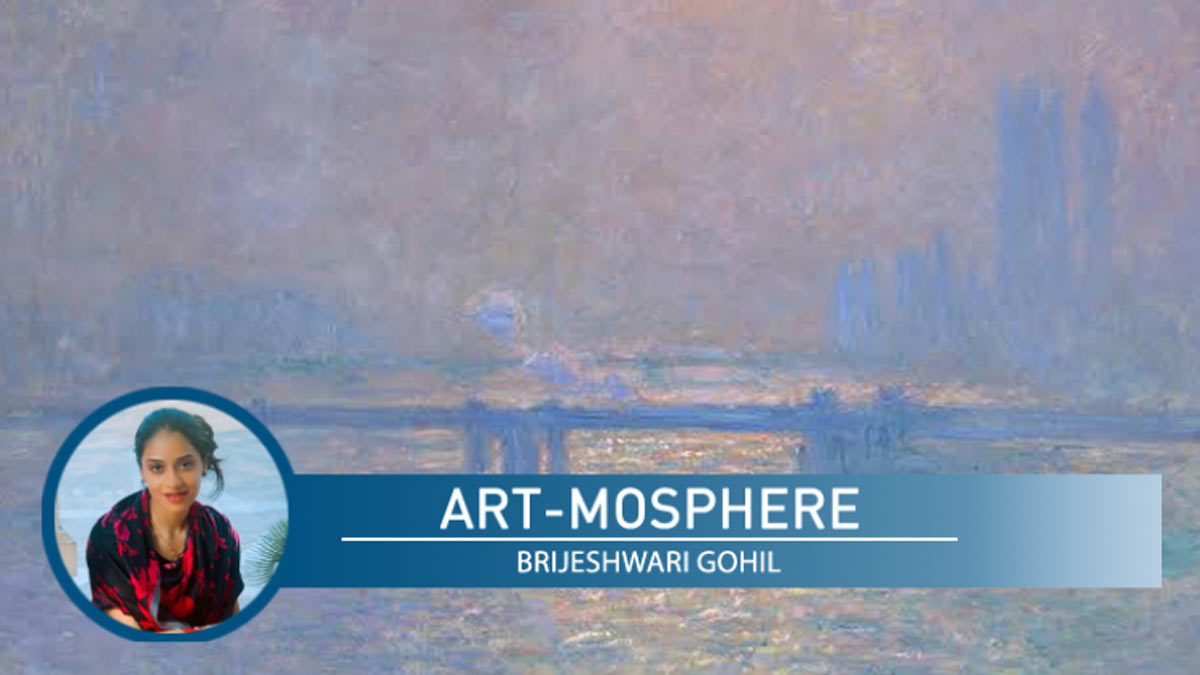Artists from time immemorial have drawn inspiration from their personal surroundings, with nature and culture being integral aspects as their muse of choice. However, travels have also heavily inspired authors as well as artists, giving them newfound perspectives and creative inspiration.
I had the opportunity to visit the Monet and London exhibition at the Courtauld Gallery in London. The exhibition is a rare opportunity to witness 21 works of art by the French artist Claude Monet, which he painted in London during his three stays in England from 1899 to 1901. I was overwhelmed by the manner in which the Impressionist presents extraordinary views of the Thames and the Parliament Building. The soft pastel shades, the play of light and dark and the simple fascination Monet had for the London fog is perhaps what makes these works, his greatest series of all time. London inspired him.
I am an ardent believer in the fact that one seldom explores their home city and often underappreciates their own surroundings—an observation I made while conducting several heritage walks in my hometown. Could Monet have seen the beauty of these places if he was a Londoner walking along the Thames on a rainy, foggy day? Perhaps not.
Many create people, be it a writer, poet, or even a chef, travel near and far, searching for the inspiration that may speak to their soul. For example, the Orientalists travelled across the East, painting the people and places they saw. Would they have had the same fascination and intrigue if it was their own hometown? It was works of art by Oriental artists such as John Griffith, Thomas and William Daniel, Horace Van Ruith, which were perceived as the views of India much before the advent of photography.
John Griffith’s paintings of the many temple steps of India depict a serene place of worship with women often seen gracefully walking along the temple in beautiful sarees. Their delicate, soft expressions and the quiet, organised happenings of the temple are quite contrary to the daily chaos of a temple one witness today. It is this view of his, a fresh, unique gaze, at times romanticised, as an outsider, a traveller, that could perhaps be compared to that of Monet and the manner by which he brings to life London.
Unlike the Orientalists, who documented and surveyed the Indian landscape, Nicholas Roerich idealised the majestic Himalayas. Upon arriving in India, the Russian artist, whose works are now a national treasure, was immediately drawn to all that the region had to offer. He explored the depths of the mountainous regions and surveyed the Northern landscape. He was enchanted by the Himalayas and drew them with a level of mystique. Perhaps this was because of his interest in the concept of ‘Shambhala’, a utopian land of endless truth, knowledge and peace or connecting his art to a divine universe. His paintings, sketches and drawings of the Himalayas are unique in style, colour and composition. His focus is on the landscape, figures seldom seen and when visible, lost in the depth of the landscape. Be it a religious leader or an important historical figure. In doing so, he unites faith and tradition.
There is a sense of innate primitiveness juxtaposed with layers of colour and light. Roerich brings to life his quest to see the unseen, and understand the unfathomable, for a deeper meaning to life with his art. His ethereal paintings are an attempt at drawing and painting the Shangri-la he envisions. A sacred place where knowledge and truth is infinite. His art transcends the physical and mortal, emanating divinity.
Even within India, artists have travelled near and far. There was a time when Bombay was a melting pot for artists. The Progressive Artists’ Group would not exist if it was not for the inspiration the group drew from the bustling city. Still, each of their views of the city is totally unique and different.
Similar to an artist's views, an outsider's gaze and perspective can always be inspirational and fresh as one gets along in their daily life.
An outsider's gaze
Artists across eras find inspiration in travel, gaining fresh perspectives. The 'Monet and London' exhibition reflects this, as does work by Orientalists and Nicholas Roerich, whose depictions of India and the Himalayas reveal the unique outsider's gaze
 Views of the Thames, Claude Monet
Views of the Thames, Claude Monet

